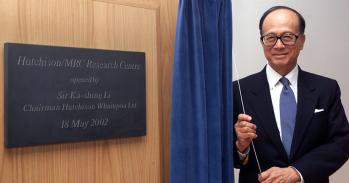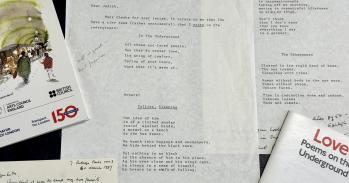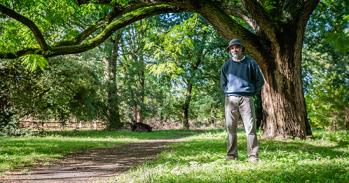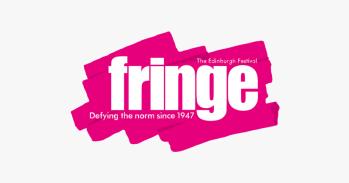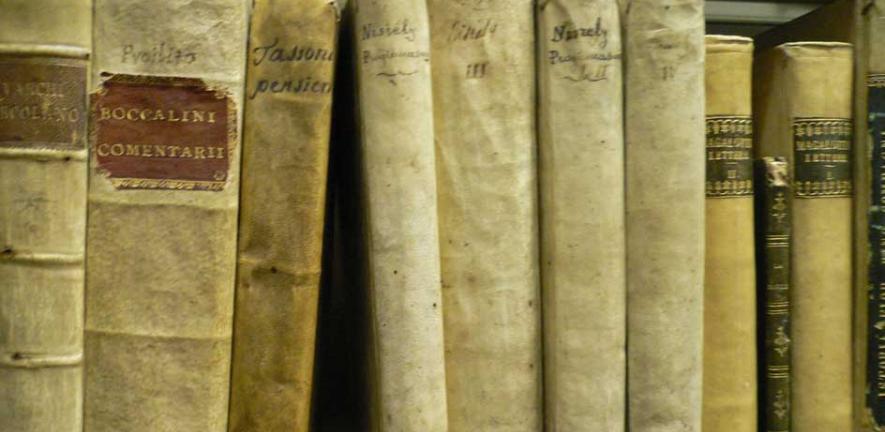
How her personal library informed the phenomenal talent of the Italian actress Eleonora Duse is revealed in a newly-published book that catalogues the Duse Collection owned by Murray Edwards College.
How her personal library informed the phenomenal talent of the Italian actress Eleonora Duse is revealed in a newly-published book that catalogues the Duse Collection owned by Murray Edwards College.
The first time I set eyes on Eleonora Duse’s books in the library of Murray Edwards I realised I had struck gold.
Dr Anna Sica, University of Palermo
A book launched tomorrow (24 January) at Heffers bookshop in Cambridge shines new light on the extraordinary life of the legendary Italian actress Eleonora Duse (1858-1924) whose extensive library of books was bequeathed to New Hall (now Murray Edwards) in the 1960s as part of a bigger collection. Many of them contain her personal bookplates and handwritten notes, and when some of the volumes were opened the college librarian found pressed flowers between the pages as bookmarks for significant passages.
With her beauty and talent, Duse captivated the imagination of many of the writers of her time, including the Irish novelist James Joyce. The Murray Edwards Duse Collection by Anna Sica and Alison Wilson sets her library within the wider context of her life and looks at her career through the prism of the many books she acquired to develop her own understanding of the parts she played and enable her to engage intellectually with her peers in the world of art and literature.
The books that once belonged to Duse were donated to New Hall in 1962 by the actress’s grandchildren, Father Sebastian Bullough and Sister Mary Mark. They were children of Duse’s only daughter, Enrichetta, and her husband, Edward Bullough, professor of Italian at the University of Cambridge. When they gave their mother’s books, the Mrs Edward Bullough Bequest, to the newly-emerging college, they did not reveal that the bequest included their grandmother’s books.
As Miss Sarah Newman, New Hall’s first librarian, began to record the entire bequest, she realised that several books it contained had belonged to the famous Italian actress. But for decades the volumes once owned by Duse were overlooked. Duse’s biographers and scholars have invariably mentioned Duse’s personal library but have usually concluded that it was lost after the dismantlement, in 1914, of the library of her women’s cultural club, The Actresses House in Rome.
Only recently was it revealed that the Bullough Bequest contained much of Duse’s personal library of the books she described famously as her “artistic wardrobe” and most treasured possessions. The provenance of these books came fully to light in 2007 when Dr Sica, historian of theatre at the University of Palermo, began to research the origins of the books in the Bullough Collection with the help of librarian Alison Wilson and others at the University of Cambridge.
It is thought that the Bulloughs may have deliberately concealed the provenance of some of the books in the bequest and it was recorded that Enrichetta burnt many of the letters from her mother’s lover, the Italian poet, Gabriele d’Annunzio, who made Duse the heroine of one of his novels. Duse had a series of famous lovers and was considered a muse by some of the most celebrated artists and writers of her time – including Rainer Maria Rilke and James Joyce.
Duse’s fascinating journey as the daughter of impoverished travelling actors who rose to international fame has been the subject of several biographies which have concentrated on her interaction with some of best-known names in the arts world of her era – including her passionate affair with d’Annuzio, her professional rivalry with Sarah Bernhardt, and her close friendship with Isadora Duncan and other iconic figures of an age that continues to capture public imagination as a time of high romance.
The Murray Edwards Duse Collection focuses instead on Duse’s intellectual life and thirst for knowledge as seen through her collection of books, which range from histories of theatre to books on the cubism movement in art, from criticisms of French literature to guides of European cities. Despite her lack of formal education, and her irregular income as an actress, she acquired both newly-published literature and antiquarian volumes.
Together Duse’s books reveal her passion for the arts, her interest in the classics, and her impressive grasp of several European languages. Above all they speak of her commitment to researching in almost scholarly depth the roles she played. Indeed, it is thought that Duse’s approach of immersing herself in the parts that she played laid the foundations for what became known as method acting.
“The first time I set eyes on Eleonora Duse’s books in the library of Murray Edwards I realised I had struck gold,” said Dr Sica. “This remarkable resource enables us to understand Duse’s intellectual evolution, the erudition that she displayed throughout her acting career, and her artistic and intellectual profile which inspired come of the major artists of her time.”
The Murray Edwards College Duse Collection (published by Mimesis) will be launched at Heffers, Trinity Street, Cambridge at 6.30pm on Thursday 24 January 2013. The event is open to all.
This work is licensed under a Creative Commons Licence. If you use this content on your site please link back to this page.


